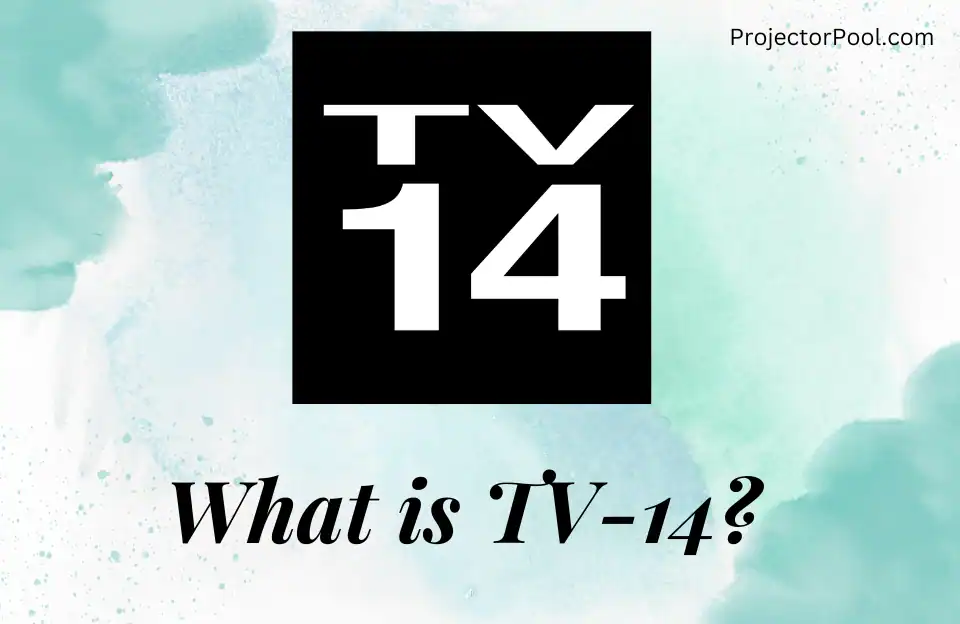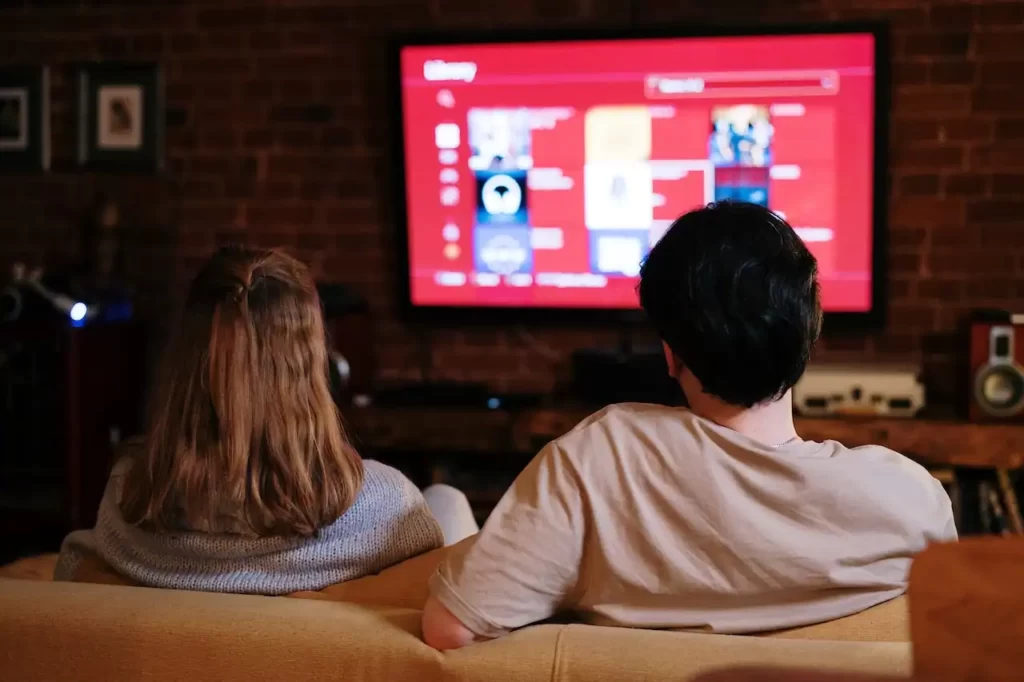The PG-13 rating, which stands for “Parental Guidance suggested for children under 13,” provides a general indication that some material may be inappropriate for young children. It serves as a bridge between the more lenient PG (Parental Guidance) rating and the more restrictive R (Restricted) rating. While the criteria for PG-13 may vary slightly across countries, it generally restricts certain elements such as strong language, intense violence, and sexual content.
So as discussed above, In the world of entertainment, ratings play a crucial role in guiding viewers toward appropriate content. Two commonly used ratings in the film and television industry are PG-13 and TV-14. Here will delve into the differences and similarities between PG-13 and TV-14 ratings, & understanding more about them.
The Importance Of Ratings

Ratings serve as valuable guidelines for viewers, helping them make informed choices about the content they consume. By understanding the distinctions between ratings like PG-13 and TV-14, viewers can align their preferences with appropriate content that matches their comfort levels and age appropriateness.
What is PG-13?
While the criteria for PG-13 may vary slightly across countries, it generally restricts certain elements such as strong language, intense violence, and sexual content. This rating aims to strike a balance between appealing to a wide audience while maintaining a level of caution for younger viewers.

The PG-13 rating, which stands for “Parental Guidance suggested for children under 13,” provides a general indication that some material may be inappropriate for young children. It serves as a bridge between the more lenient PG (Parental Guidance) rating and the more restrictive R (Restricted) rating.
Description of PG-13 Rating
A notable characteristic of movies with a PG-13 rating is their ability to cater to both adolescents and adults. Films like the Marvel Cinematic Universe series and popular franchises like “Harry Potter” and “The Hunger Games” often fall under this rating.
They strike a delicate balance between engaging storytelling, action-packed sequences, and limited use of explicit content, making them suitable for a broad audience.
Examples of PG-13 Movies
- “The Avengers” – A thrilling superhero film that balances action and humor.
- “Jurassic Park” – An adventure film with intense sequences and some violence.
- “The Hunger Games” – A dystopian drama with action and themes suitable for older children and teenagers.
What is TV-14?

On the other hand, the TV-14 rating is specifically designed for television shows and series. It indicates that the program contains content suitable for viewers aged 14 and above. The TV-14 rating takes into account factors such as violence, sexual content, and coarse language that may not be suitable for younger audiences without parental guidance.
Similar to the PG-13 rating, the TV-14 rating aims to strike a balance between engaging storytelling and appropriate content for its intended audience.
Exploring the TV-14 Rating
Television shows like “Stranger Things,” “Breaking Bad,” and “The Walking Dead” often fall under the TV-14 rating. These shows explore mature themes, contain intense scenes, and use stronger language compared to programs with lower ratings.
The TV-14 rating enables content creators to craft narratives that resonate with teenage and adult viewers while providing a level of caution for younger audiences.
Examples of TV-14 Shows
- “Stranger Things” – A suspenseful series with a mix of horror, sci-fi, and teenage drama.
- “Breaking Bad” – A critically acclaimed drama with mature themes and strong language.
- “Grey’s Anatomy” – A medical drama that addresses adult relationships and complex issues.
Comparison and Differences
When comparing PG-13 and TV-14, several factors come into play. Firstly, the content restrictions differ between the two ratings. While PG 13 and TV 14 ratings share similarities in terms of age restrictions and content restrictions, there are notable differences between them.
Age Restrictions
PG 13 is inclusive of children aged 13 and above, whereas TV 14 narrows down the target audience to viewers aged 14 and above. This distinction reflects the slight difference in maturity levels between the two age groups.
Content Restrictions
TV 14-rated content may push the boundaries slightly further than PG 13-rated content in terms of language, violence, sexual content, and substance abuse. However, both ratings maintain a responsible approach to ensure the content is suitable for their target audience.
Examples of Popular Shows
To better understand the practical application of PG 13 and TV 14 ratings, let’s take a look at some popular shows that fall under these categories.
- Stranger Things – TV 14
- The Hunger Games – PG 13
- Riverdale – TV 14
- Jurassic Park – PG 13
- Breaking Bad – TV 14
These examples showcase the diversity of content within each rating and how different shows cater to their respective target audiences.
Implications for Viewers
Understanding the distinction between PG-13 and TV-14 ratings is vital for viewers to make informed choices about the content they consume. Parents, in particular, must be aware of these ratings to guide their children’s viewing habits.
PG-13 and TV-14 ratings act as valuable tools, indicating whether a movie or TV show is suitable for a particular age group and providing a basis for discussions on media consumption.
It is essential for parents and guardians to exercise their responsibility in assessing the appropriateness of content for their children. While ratings offer guidance, personal judgment and knowledge of individual children’s maturity levels are equally important.
Engaging in open conversations about media content can help foster critical thinking skills and media literacy in younger viewers.
Media Industry Perspective
From a media industry perspective, ratings play a crucial role in marketing and targeting specific audiences. Film studios and television networks consider the desired rating during the production and marketing phases.
The rating influences the creative decisions made by content creators, ensuring their work aligns with the intended audience and adheres to industry guidelines.
However, adhering to ratings can present challenges for content creators who seek to push creative boundaries. Striking a balance between delivering compelling narratives and conforming to rating restrictions can be a delicate process.
It requires creativity and skill to engage viewers without resorting to excessive violence, explicit content, or strong language.
Viewer Preferences and Reception
Audiences have diverse preferences when it comes to the content they consume, and ratings play a role in managing those expectations. Viewers often develop certain expectations based on the rating assigned to a movie or TV show.
They anticipate a particular level of intensity, maturity, or suitability based on the rating, and creators must deliver accordingly.
Reception to content varies among viewers, with some appreciating the creative expression within rating constraints, while others may desire more explicit or mature content. Balancing these expectations is a challenging task for content creators.
It requires them to consider the intended audience, storytelling goals, and the need for responsible entertainment.
Controversies and Criticisms
Content ratings are not without controversies and criticisms. Some argue that the ratings system is subjective and can be inconsistent across different movies or shows.
Concerns have been raised about the portrayal of violence and sexual content, with critics suggesting that it may lead to desensitization or have a negative impact on viewers, especially younger ones.
How to Set Parental Controls on TV: A Guide for Responsible Viewing

Parental controls allow you to restrict access to certain channels or content that may not be suitable for children. If you’re wondering how to set parental controls on your TV, follow these simple steps:
1. Understand your TV’s capabilities:
Different TVs have varying features and interfaces for parental controls. Familiarize yourself with your TV’s user manual or menu options to locate the parental control settings.
2. Access the settings menu:
Using your TV remote, navigate to the settings or setup menu. Look for options related to parental controls or restrictions.
3. Set a passcode:
Most TVs require a passcode to enable and disable parental controls. Choose a unique and secure passcode that you can remember, but one that is difficult for children to guess.
4. Select the channels:
Depending on your TV model, you may have the option to select specific channels to block. Browse through the list of available channels and select the ones you want to restrict access to.
5. Block content by rating:
TVs often provide the ability to block content based on ratings, such as TV-MA (Mature Audiences) or R (Restricted). Choose the appropriate ratings you want to block, ensuring that they align with your family’s values and the age of your children.
6. Time-based restrictions:
Some TVs allow you to set time restrictions, limiting TV access during certain hours. This feature can be useful for controlling screen time and ensuring that children focus on other activities.
7. Internet-enabled TVs:
If you have a smart TV connected to the internet, explore additional parental control options related to streaming services and online content. Many streaming platforms also offer their own parental control features that you can utilize.
8. Test the parental controls:
After configuring the settings, test the parental controls to ensure they are working correctly. Try accessing the restricted channels or content using the passcode. If everything is set up correctly, the TV should prevent unauthorized access.
9. Regularly review and update:
As your children grow older, their viewing preferences and maturity levels may change. Regularly review and update the parental control settings to accommodate these changes and ensure that the restrictions remain relevant.
See More:
- How To Connect Nintendo Switch To Projector
- How to Watch TV on Projector without a Cable Box
- How To Use a Projector Outside During The Day?
- 4K 30hz Vs 60hz: Which HDMI Should I Pick?
- Best Mini Projector For iPhone
PG 13 vs TV 14: FAQs

What does PG-13 mean?
PG-13 stands for “Parental Guidance suggested for children under 13.” It indicates that some material may be inappropriate for children under 13 years old.
Can a 13-year-old watch TV-14 shows?
TV-14 shows are generally recommended for viewers aged 14 and above. However, parental discretion is advised, and parents should consider their child’s maturity level and personal values.
Why is parental guidance important when it comes to ratings?
Parental guidance helps ensure that children are exposed to age-appropriate content. Parents can use ratings as a tool to make informed decisions and guide their children’s media consumption based on their maturity levels and family values.
Are there any other content ratings apart from PG-13 and TV-14?
Yes, there are various other content ratings, each serving a specific purpose. Some examples include G (General Audience), PG (Parental Guidance), R (Restricted), and TV-MA (Mature Audience).
Can PG-13 movies or TV-14 shows be suitable for all teenagers?
While PG-13 movies and TV-14 shows are generally suitable for teenagers, individual preferences and sensitivities may vary. It is important to consider the specific content, themes, and maturity level of the teenager when making viewing decisions.
Are there instances where a movie or TV show may be given a different rating in different countries?
Yes, ratings may vary across countries due to differences in cultural norms, societal values, and rating systems. Some content may receive a higher or lower rating depending on the country of release.
Can a PG-13 movie or TV-14 show still be enjoyable for adults?
Absolutely. PG-13 movies and TV-14 shows are often designed to appeal to a wide range of viewers, including adults. These ratings provide an indication of the content’s suitability for different age groups while allowing for engaging storytelling and entertainment.
PG 13 vs TV 14: Conclusion
That’s all about the PG-13 vs TV-14 ratings. As we know that these ratings play a significant role in guiding viewership choices, understanding the criteria, similarities, and differences between PG-13 and TV-14 ratings empowers viewers to make informed decisions about the media they consume.
Therefore, by considering the themes, language, violence, and other elements depicted in a movie or TV show, viewers can align their choices with their personal preferences and values.
Additionally, recognizing the importance of parental guidance and responsibility in navigating these ratings ensures a well-rounded media experience for younger viewers. Thank You For Reading!
As an experienced Software Engineer in a Projection-Based Technology Company, I love sharing my Knowledge to utilize and help others to learn more about Projectors. Thus one can get the right Projector for their needs.



